The Dime has always been “valuable real estate” in the numismatic realm. Often, coin collectors drool over rare pieces with the promise of paying top dollar for the finest pieces. And what could be rarer than a Barber dime that was minted over a century ago?
In this presentation, we’ll be looking at the 1912 Dime, its mintage, value, and the valuable error coins in its roster. And as is tradition, why don’t we start with a valuation summary?
1912 Barber Dime Value Chart
| Mint | Good | Fine | Extra Fine | Uncirculated |
| 1912 Dime
No Mint Marks |
$4 | $6 | $25 | $75 |
| 1912-D Dime | $4 | $6 | $25 | $75 |
| 1912-S Proof Dime | $4 | $6 | $35 | $90 |
Source: Guide Book of United States Coins “The Red Book”
1912 Dime: Physical Features
The most prominent feature of the 1912 dime is its color and appearance. In those days (pre-1965), dimes were made of 90% silver and 10% copper, giving the coin a silver appearance.
At 2.5 grams, the 1912 dime was slightly heavier than the Roosevelt dimes we use today. As for measurements, the 1912 Barber Dime has a diameter of 17.9 mm and a thickness of 1.35 mm, just like today’s dimes.
There are two sides to every coin, and below are the features and characters on each face of the 1912 Barber dime.
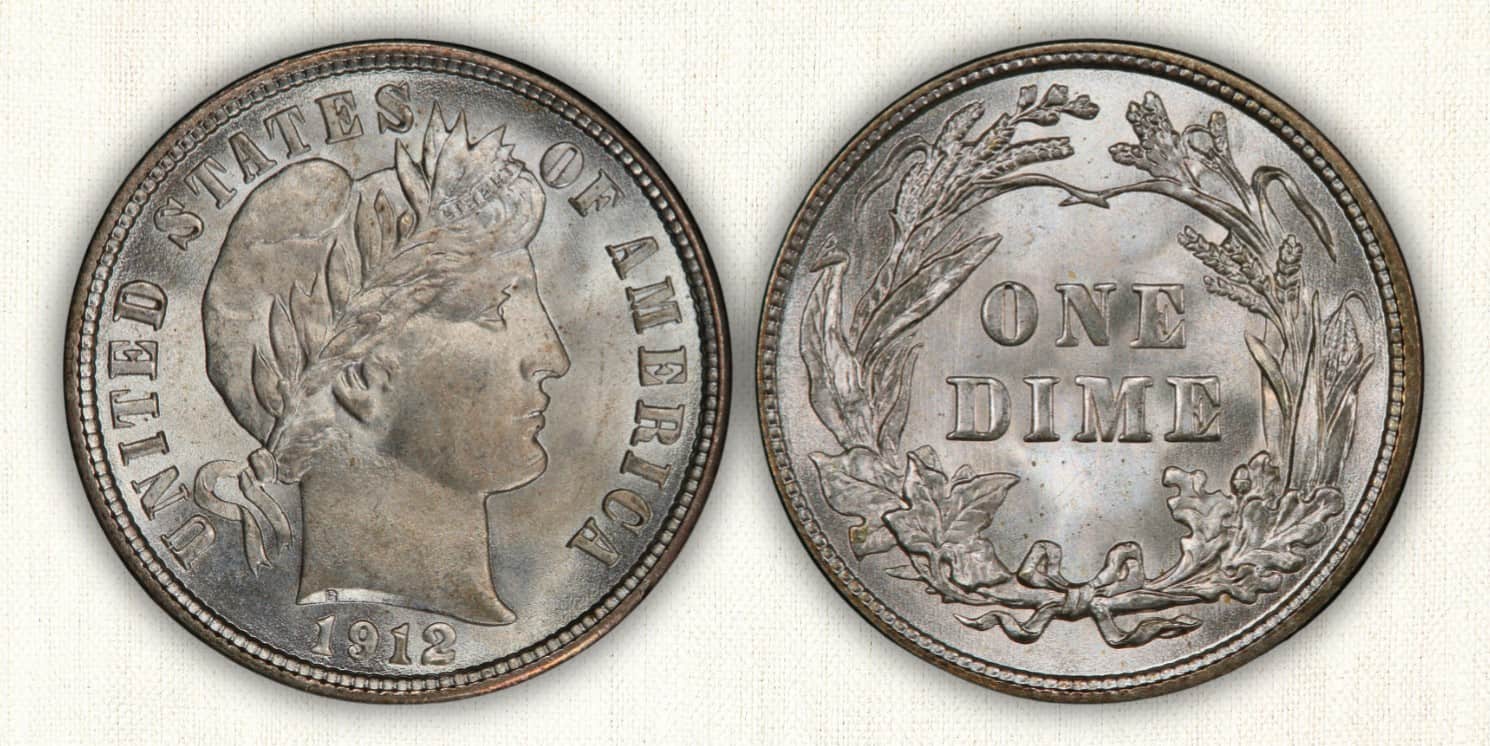
Obverse Features
The obverse face of the 1912 dime features a design that was the brainchild of Charles Barber. This was the same design (with subtle changes) used in the quarter and half dollar coins of the era (between 1892 and 1916). Charles Barber’s design heavily borrowed from the French coins of the era.
Don’t believe me? Here is the 1908 Gold Marianne against the 1912 Barber Dime:
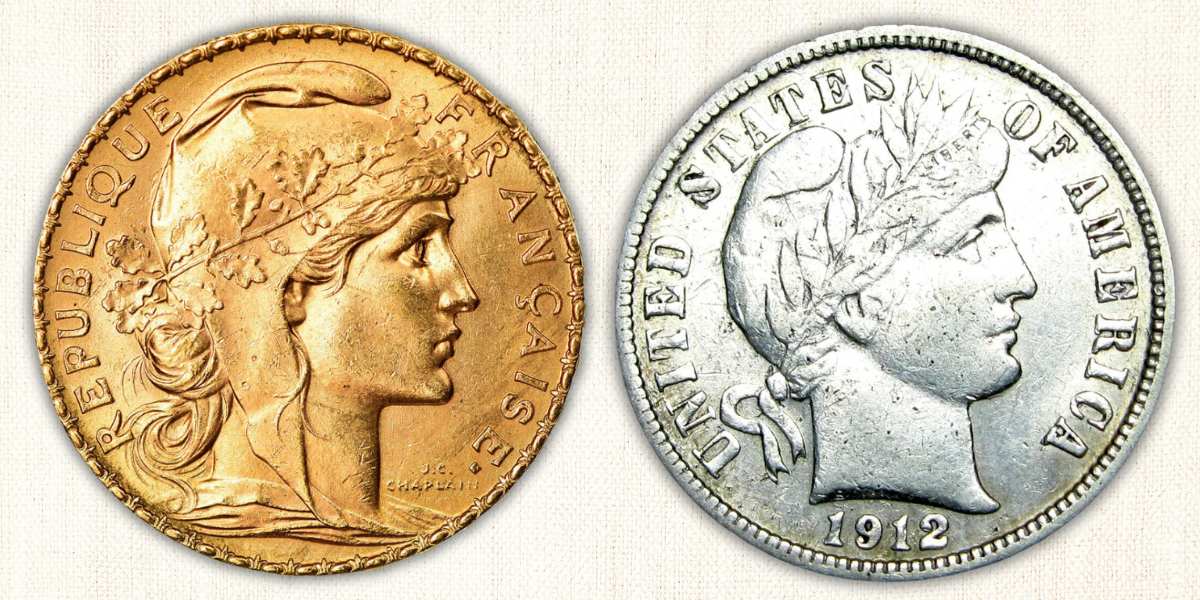
And like many coins worldwide, the 1912 dime features a reeded edge, adding to the beauty and texture of the coin’s rim.
For his design, Charles Barber decided to include the following elements and characters on the obverse face of his coinage:
- The right-facing portrait of Lady Liberty(wearing a Phrygian cap and a crown of olive twigs) sits prominently at the coin’s center.
- Arching around Lady Liberty’s portrait is the embossed print of the country of issue, “UNITED STATES OF AMERICA.”
- Just below Lady Liberty is the year of issue, “1912.”
- Charles Barber was also keen to leave his initials, marking the coin with a “B” under Lady Liberty’s neck.
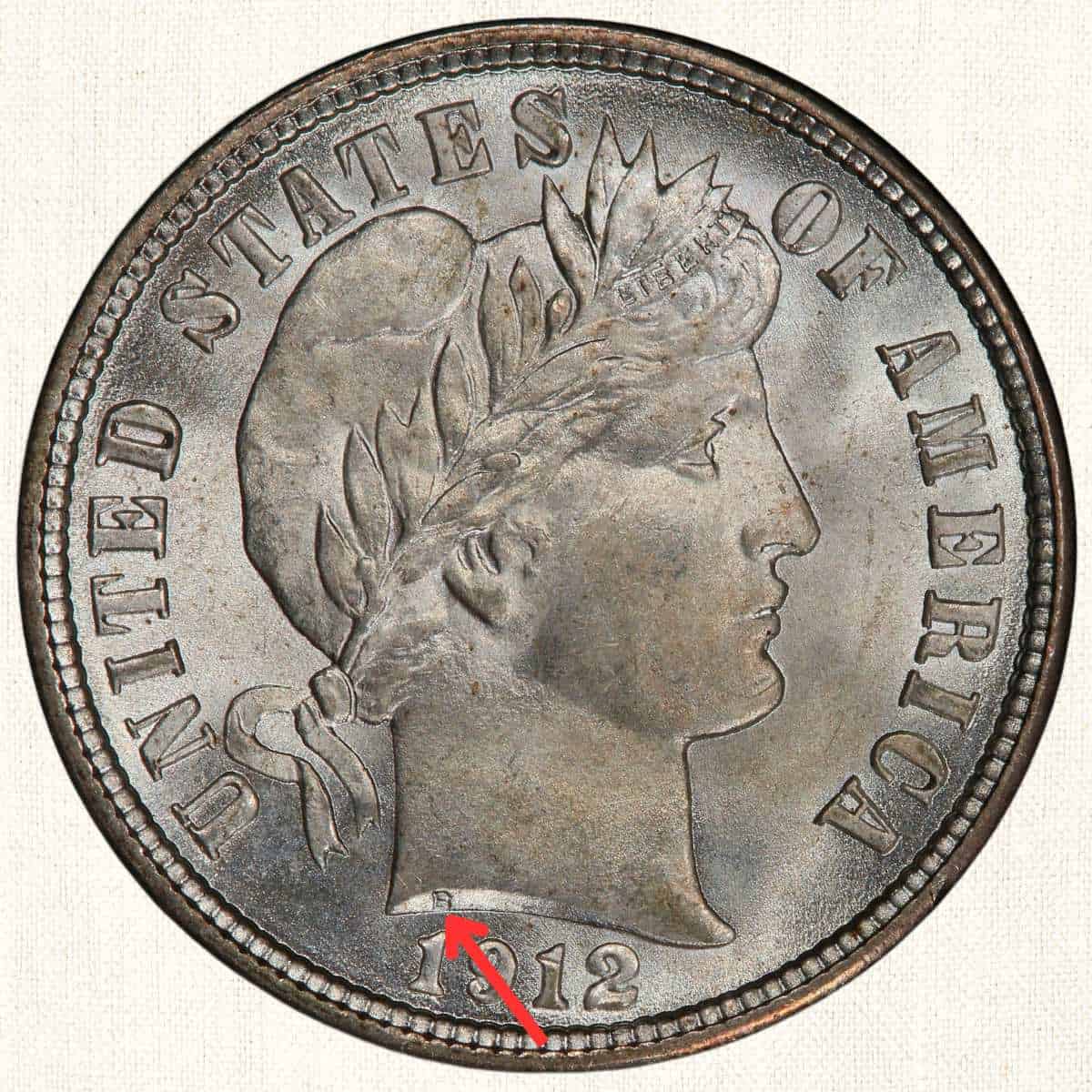
Reverse Features
The reverse’s design is also the work of Charles Barber, and he included the following elements:
- As is standard with many coins, this 10-cent coin showcases its denomination with the prominent text, “ONE DIME,” embossed at the center.
- Surrounding the denomination is a perfectly centered-mixed-material wreath that includes elements like oak and maple leaves, corn, and wheat. The wreath is tied neatly with a bow at the bottom of the coin.
- Below the wreath’s bow is the coin’s mint mark, which could be D, S, or no mark at all.
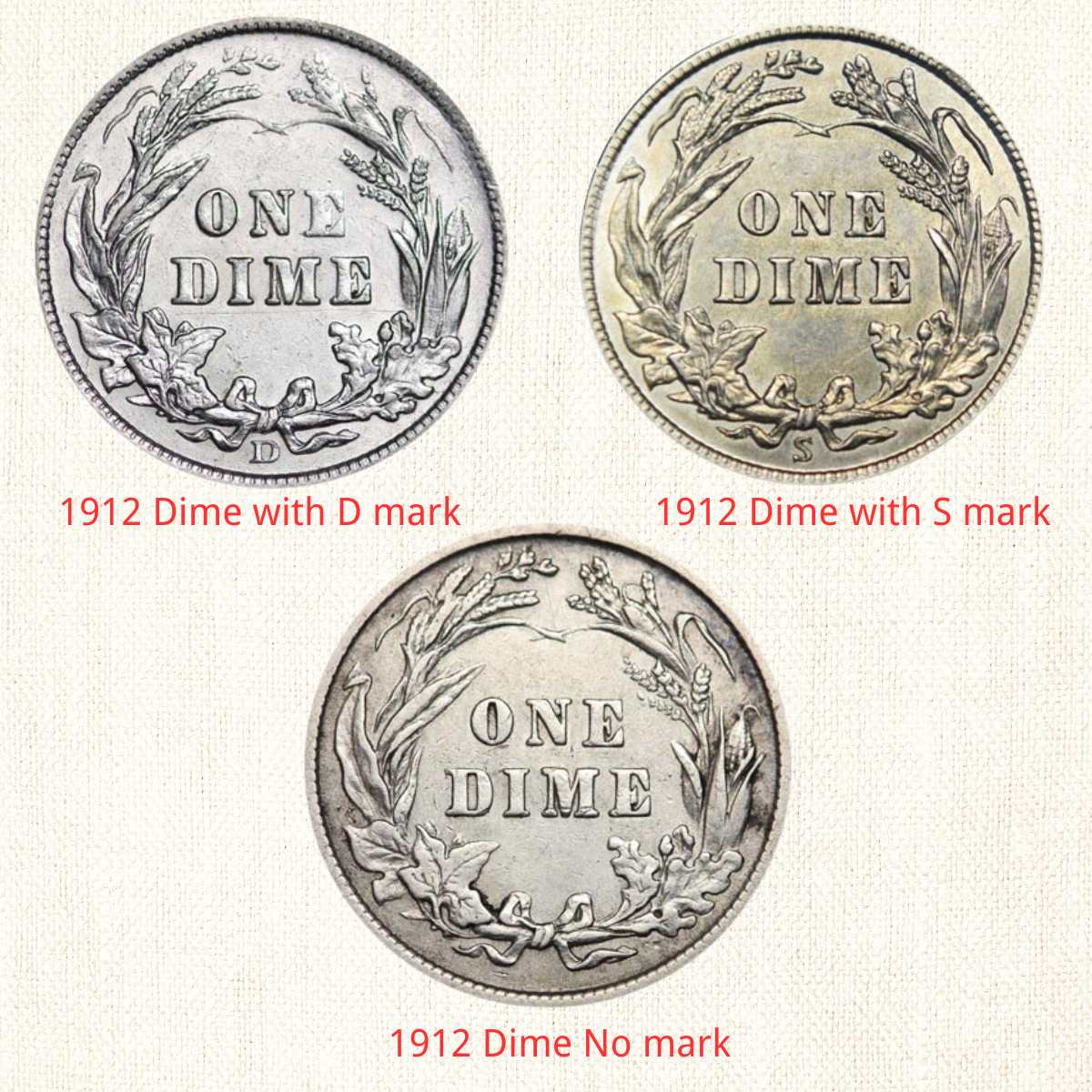
1912 Dime: Historical Background
The 1912 dime is part of the now iconic Barber Series of coins. These were a series of dimes, quarters, and half dollars designed by the then Chief Engraver of the United States Bureau of the Mint, Charles E. Barber.
This series of coins ran for 25 years between 1892 to 1916. Initially, the government invited all artists to participate in a public design contest where the winner was to have their designs struck on the U.S. coinage of the time. The winner would also scoop the $500 cash prize offered for the competition, a small fortune at the time.
Unimpressed by the submissions they got, the powers that be scrapped the contest and assigned the task to Charles Barber. And the rest, as we all say, is history.
1912 Dime: Varieties and Mint Marks
All 1912 dimes are identical except for the mint marks they bear. From this distinction, we get three types of 1912 dimes. These varieties include:
a. 1912-P Dime (No Mint Marks)
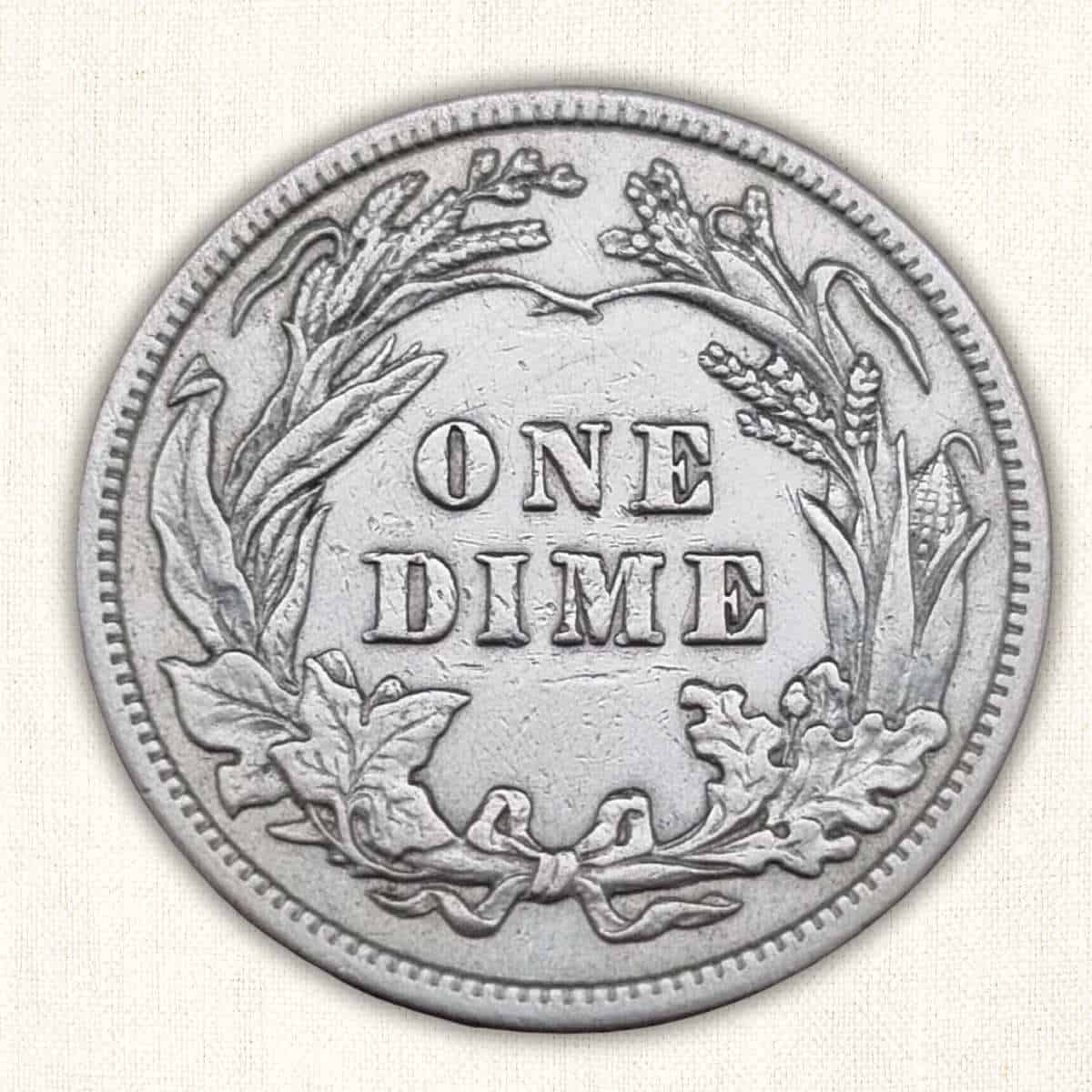
By now, you probably know that the Philadelphia Mint makes coins with no mint marks. And for the 1912 mintage, they only released 19,349,300 dimes, the most out of all the mints in 1912. This number may look like much, but it is nothing compared to the billions of coins U.S. mints produce these days.
Despite having the most coins, a good condition, 1912 Barber dimes with no mint marks are just as valuable as the 1912-D and 1912-S Barber Dime lineup. These days a decent 1912-P dime can fetch you about $4. The condition of the coin drastically increases its valuation, with uncirculated (mint state) examples being worth $75.
What’s the most expensive 1912-P dime? That record is currently held by the 1912 10C MS67 that was auctioned off for $8,050. This particular coin has a slight rainbow toning on its obverse face. More on this error later.
b. 1912-D Dime
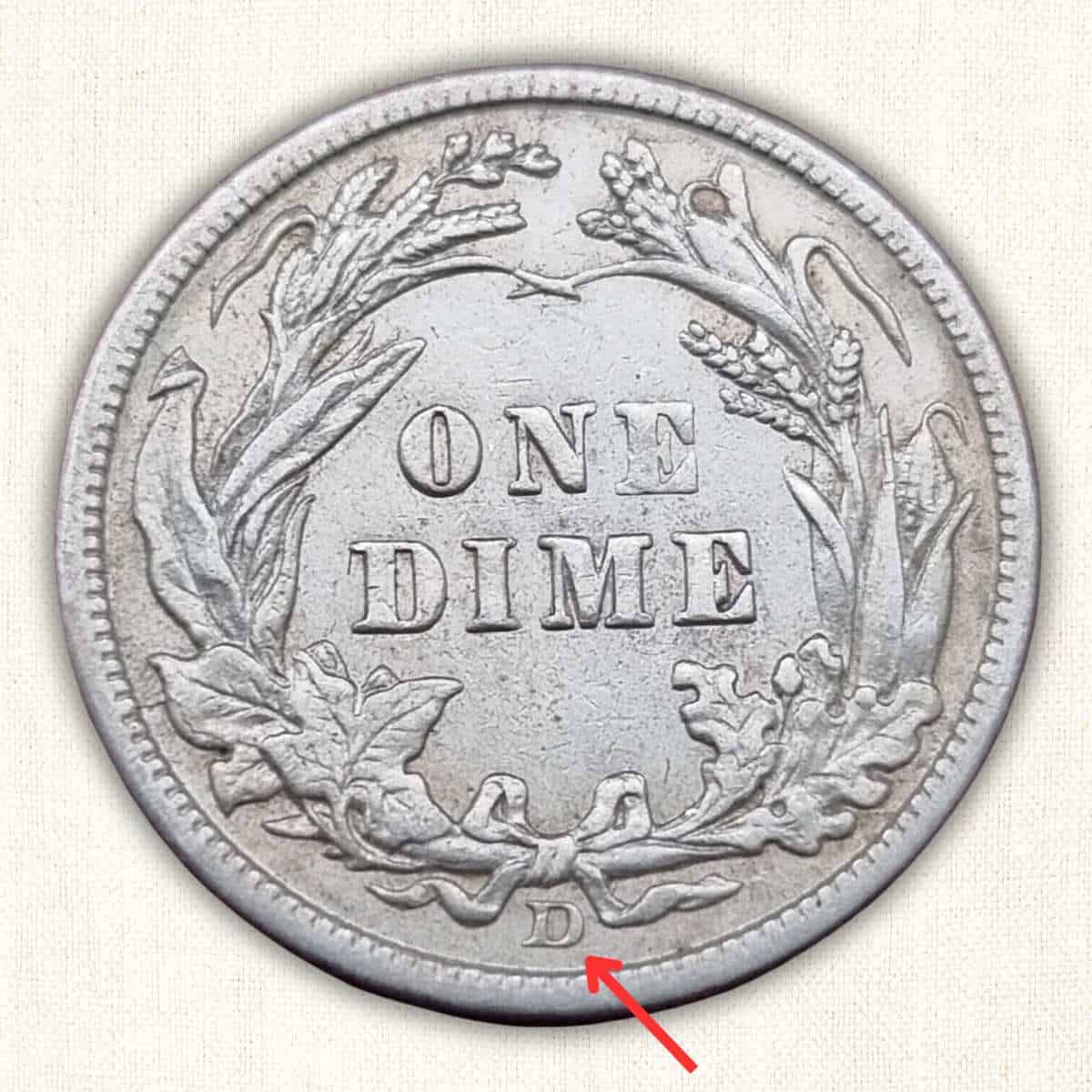
The Denver Mint has always been keen to mark their coins with the “D” mint mark. For the mintage of the year 1912, they made 11,760,000 coins. Despite having a lower mintage, a good-condition 1912-D dimes hold the same estimated value as similar-condition 1912-P dimes; $4 apiece.
Remember, this valuation is just an estimate, and it can increase or decrease with the coin’s condition. For example, an uncirculated 1912-D dime holds an estimated value of $75.
As for the most expensive 1912-D dime ever sold, that record was secured in 2016 by this 1912-D MS67 sold for $7,343.75.This particular coin has been oxidized to a rose gold complexion. The coin’s condition is extremely fine, with minimal scratches and wear.
1912-S Dime

The 1912-S dimes are products of the San Fransisco Mint. In 1912, they minted 3,420,000 of these coins, making the 1912-S dime the variety with the lowest mintage.
So what does this rarity do to the value of the 1912-S dime? Not much, apparently, because a good-condition 1912-S dime has the same estimated value ($4) as similar-quality 1912-D and 1912-S dimes. Higher-grade 1912-S dimes are worth much more, with an estimated value of $90.
If you’re curious about the 1912-S dime that holds the record for the most expensive variety, that would be this 1912-S Barber Dime that sold for $21,150. This particular piece has severe rainbow toning, which adds to the coin’s rarity and value.
Valuable 1912 Barber Dime Error Coins
Apart from adding to the beauty and uniqueness of a dime, coin errors boost the value of the coin. So what are the most valuable 1912 Barber Dimes out there? Here are five 1912 Barber Dimes you should know:
1. 1919-P Dime with Rainbow Toning: Sold for $8,050
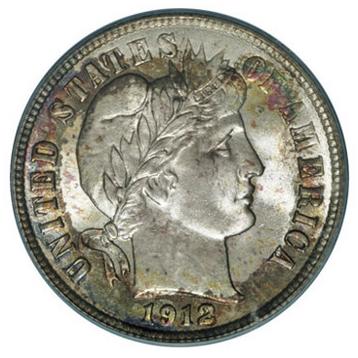
This 1912-P dime has a slight rainbow toning on the periphery of the obverse. Rainbow toning in a 1912 Barber dime is always due to the oxidation of the silver that makes 90% of the coin. The reverse is brilliant in ice white. There are also a few specks of oxidation on the reverse, but nothing to write home about.
2. 1912-D Dime with Rainbow Tonning: Sold for $6,500

Rainbow toning on a 1912 dime seems to significantly bump the coin’s value. I guess there’s a pot of gold at the end of this rainbow. For this example, the silver oxidation manifests on the periphery of both faces of the coin, splashing a touch of color to the otherwise boring silver color.
3. Finest 1912-P Dime: Sold for $4,888
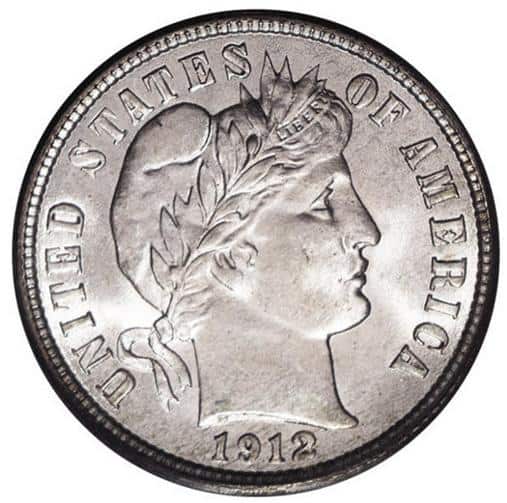
First things first, this is not an error coin, but in terms of value, it does give 1912 error dimes a run for their money. This particular example is currently certified by the PCGS as the finest 1912 barber dime, a title it shares with another 1912 dime.
The coin is pristine with no blemishes on either face; exquisite piece indeed.
4. 1912-D with Off-Center Error: Selling for $399.99
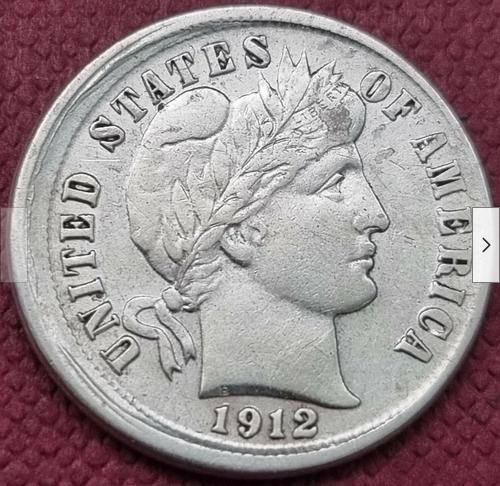
Apparently, off-center dimes don’t hold a lot of value as oxidized 1912 Barber Dimes. This particular example could be heavily disadvantaged by the condition of the coin, but it still carries significant investment potential. It suffers from noticeable wear but still maintains its ice-white appearance.
5. 1912-D Barber Dime NGC XF45 – Mint Error Broadstruck: Selling for $400
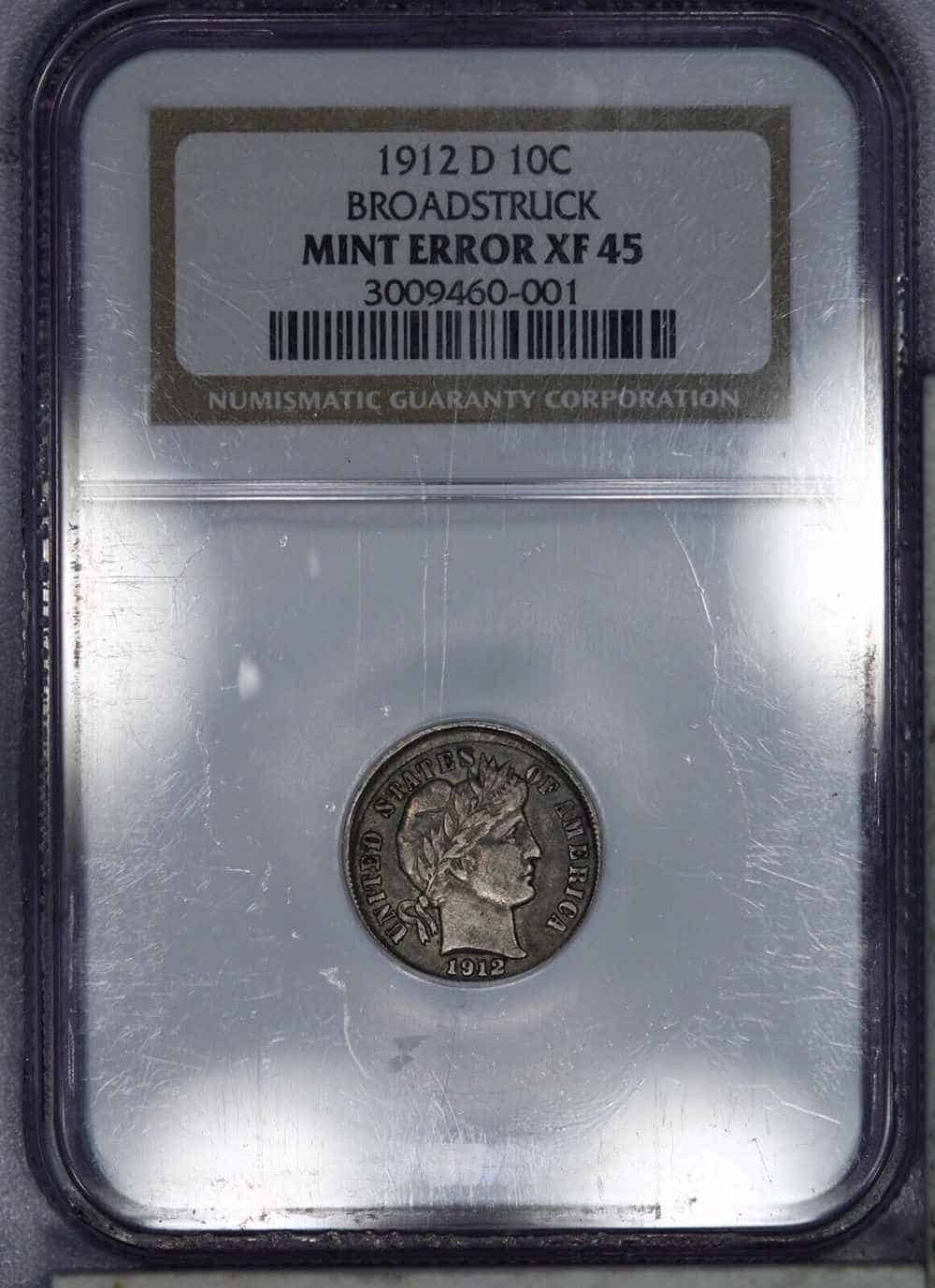
The broad-struck error occurs when the planchet isn’t properly aligned to the dies. Upon striking the planchet, the overwhelming force causes the planchet’s flesh to blob around the rim of the coin.
Like Barber dimes with off-center errors, broadstruck 1912 dimes don’t fetch much. But to be fair, this particular coin is not in the best condition. It suffers severe wear on both the obverse and reverse faces.
Final Thoughts: Is the 1912 Dime Worth Collecting?
Absolutely, It’s been over a century since the 1912 Barber Dime was released. Many of these coins have been lost through the decades, making the 1912 dime rare and more valuable than recently released coins.
So which specific varieties should you look out for? A 1912 Barber Dime in uncirculated or about uncirculated conditions is worth some money. But for the best value, pay attention to mint state 1912-S dimes.
Apparently, oxidized 1912 Barber dimes are worth a small fortune. The most expensive 1912 dime ever sold has an iridescent rainbow tone, and it was auctioned off at $21,150.
Often you hear people use the phrase “Not Worth a Dime” to express how worthless something is, but from this article, you can see that the 1912 Barber dime is quite valuable.


Jenson is a professional numismatist, a dedicated coin collector, a graduate of the College of Business at Oregon State, a life member of the American Numismatic Association (ANA), and an overall coin nerd. He is the founder of Coin Value List.
